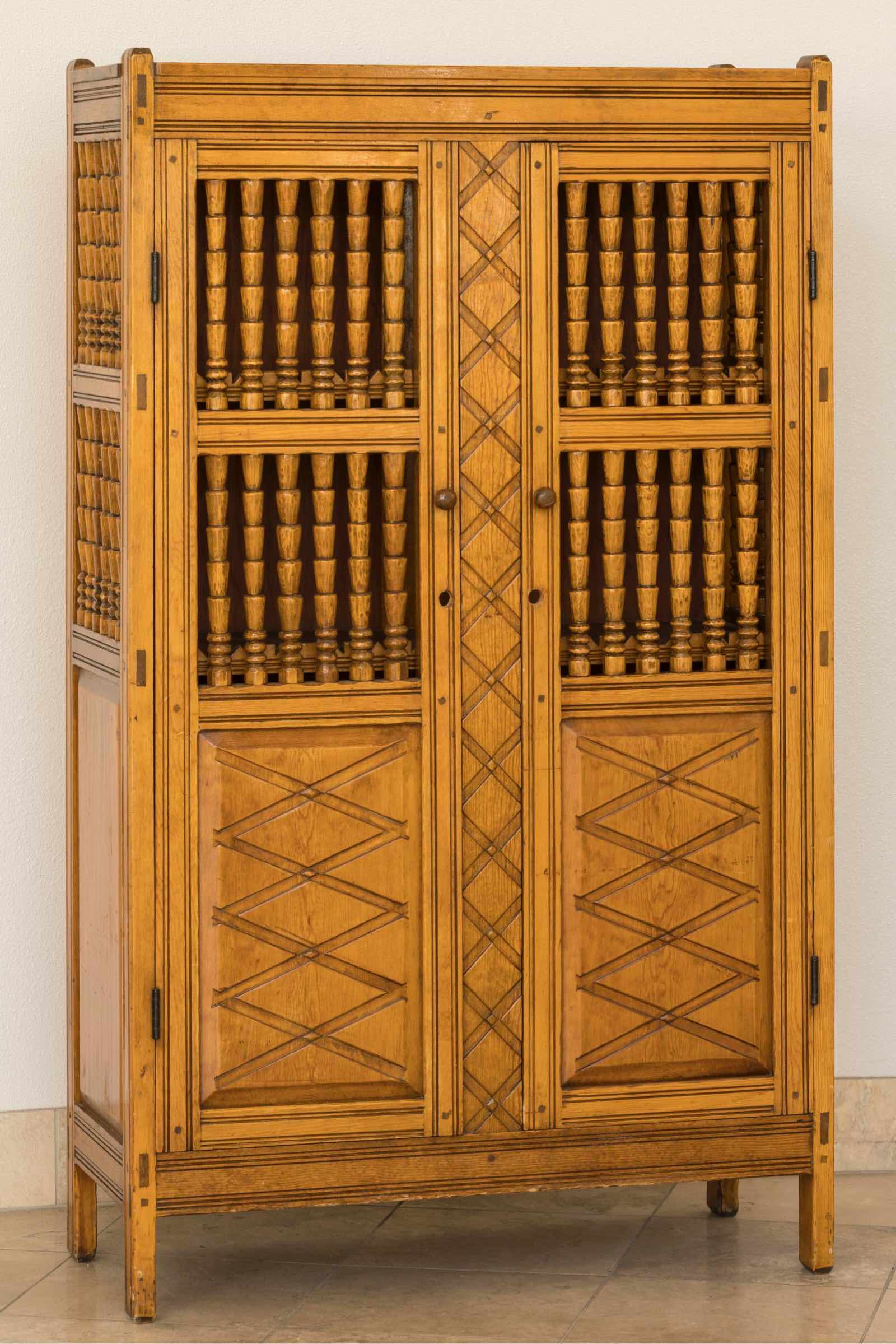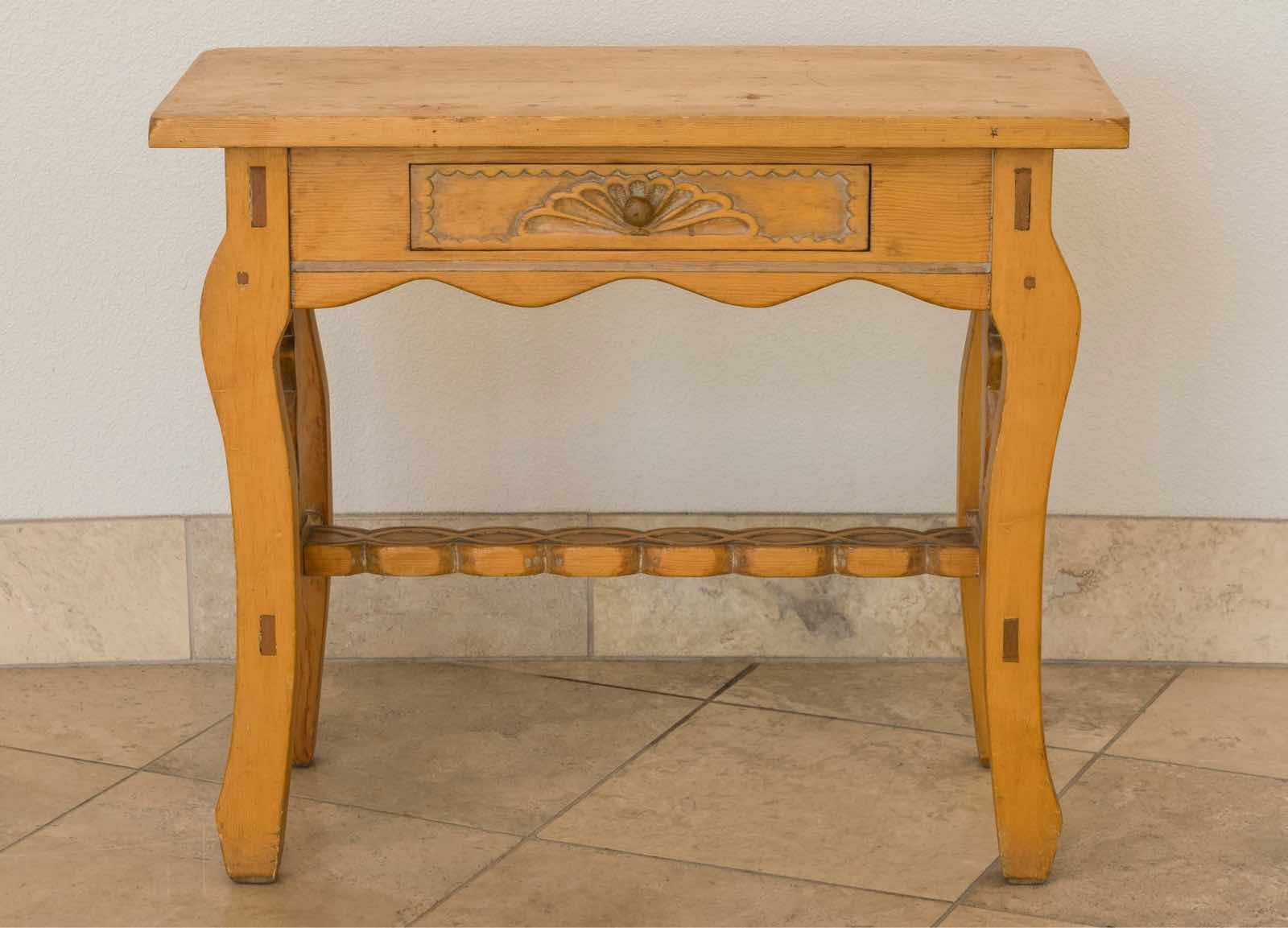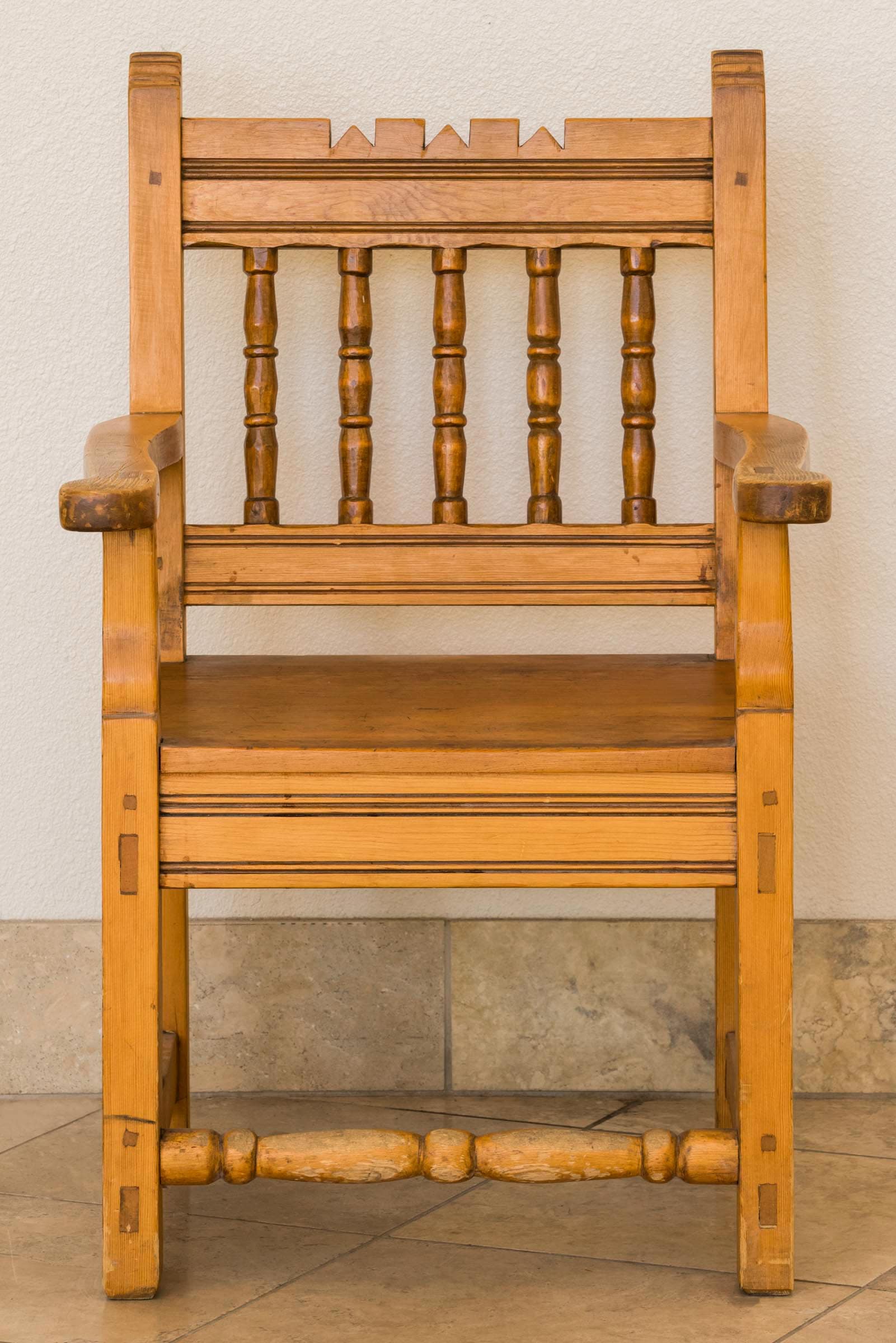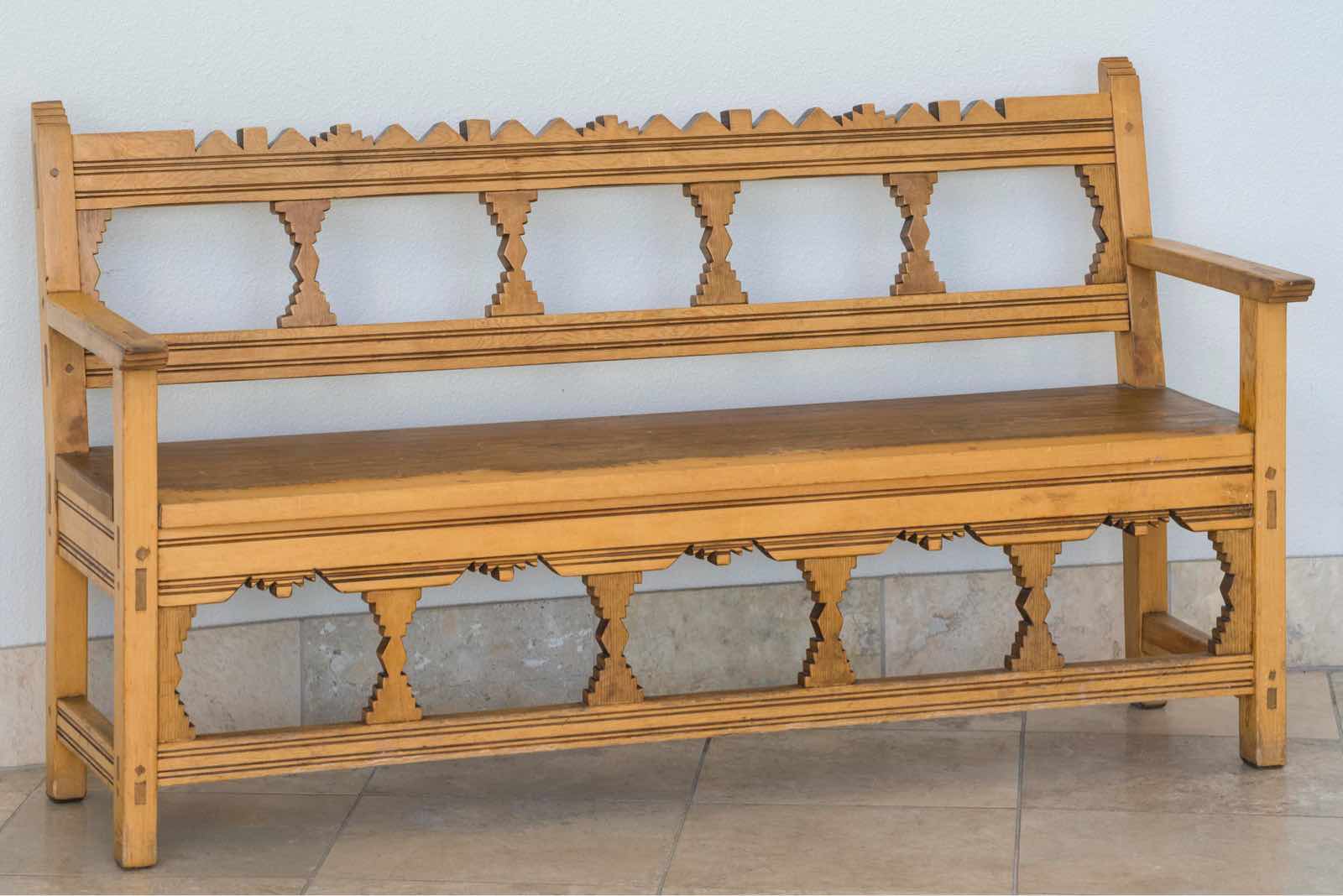Home » Special Exhibits » New Deal Nuevomexicano & Decorative Arts » Authorship & Art
New Deal Nuevomexicano and Decorative Arts
Authorship & Art
Gallup’s decorative arts collection includes twenty-four furniture pieces and light fixtures by an unknown number of uncredited artists. All of these works are unsigned, and, for the most part, we do not know the names or identities of their creators. Scholar Tey Marianna Nunn has identified Elidio Gonzales as the creator of “a set of furniture in the McKinley County Courthouse in Gallup,”1 but it is unclear if he created all of the existing furniture or only some pieces. Surviving records are sparse, and, if they originally contained attribution information (which is unlikely given that decorative arts like furniture were viewed as utilitarian objects and not as art, as will be discussed further in this exhibit), those details have been lost.
Even without knowing the names of the artists who made them, we can still learn a lot about these objects. What’s more, we can ask important questions about how we value and interpret art.
Look Closely
Look for "What" & "Who"
Look closely at these objects. What can you understand just by looking?
- In what ways are they functional?
- In what ways are they decorative?
Consider the objects as a group, then notice their individual elements and details.
- What might their similarities and differences tell you about these works?
We do not know the identity of the artists who made these objects.
- Is it important that we know who made them? If yes, why?
Does it change the meaning, and perhaps the value, of the object if we do not know who made it?
Dig Deeper
Spanish colonizers began occupying what is now the state of New Mexico in the late 1500s. At that time, the majority of Europeans created art through highly regulated guilds, and that is what they brought to New Spain. Apprentices learned from master artists, or maestros, and the goal was often to repeat subjects, styles, and techniques with limited innovation.
This method of training artists and craftspeople continued through Mexican Independence from Spain in 1821, after New Mexico became a United States territory in 1850, through statehood (1912), and was eventually adopted by New Mexico’s New Deal programs. Beginning in 1933, the state established forty-two vocational schools in mostly small, rural, and majority-Hispano towns for the dual purposes of a) training artists as workers to provide families with income, and b) reviving Spanish Colonial traditions of craftsmanship. When the Federal Art Project (FAP) and National Youth Administration (NYA) arrived in New Mexico in 1935, they piggybacked on this existing successful model. In all likelihood, the majority of the decorative objects in Gallup’s collection were made in state vocational schools working in concert with the FAP and NYA to furnish the McKinley County Courthouse, built in 1938 through the Public Works Administration (another New Deal program).
The 1930s vocational schools operated according to a workshop model not unlike the one that had been familiar to Nuevomexicanos of previous generations. Several artists or students often worked on the same piece, and instruction centered on standardized manuals (called “bulletins”) for Spanish Colonial arts, including woodworking and carpentry, tinwork, weaving, and embroidery. Bulletins dictated standards, principles, and methods for “authentic” design and fabrication (for further discussion see the “Reviving Traditions” section). Students/artists were meant to learn and duplicate patterns, blueprints, and models.
Individual artists, however, often relied on their own skills and ideas in executing these concepts. Still, the workshop system, with its emphases on collaboration and convention, meant that New Deal programs typically did not credit Nuevomexicano makers. Additionally, as Tey Marianna Nunn explains in her authoritative study Sin Nombre: Hispana and Hispano Artists of the New Deal Era, Hispanos were seen by art administrators and art world gatekeepers as ethnic craftspeople, not artists. That bias has meant that the hundreds of Hispano artists who created decorative arts (and much more) during the New Deal have mostly gone unnamed and unrecognized.
Look Again
Look for Individual Expression
Compare and contrast these two benches from the collection with their corresponding blueprints from the New Deal’s “Spanish Colonial Furniture” bulletin. In what ways do the benches mirror the templates? In what ways do they deviate?
Notice how artists mixed and matched elements and motifs to put their own spins on prescribed forms. What appear at first glance to be reproductions become distinctive, creative expressions of style and culture on second look.
Eliseo Rodriguez

2001 photograph of Eliseo Rodriguez by Tony O’Brien.









